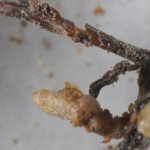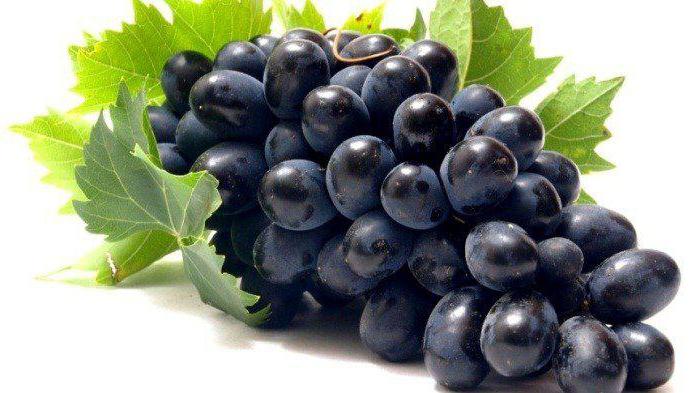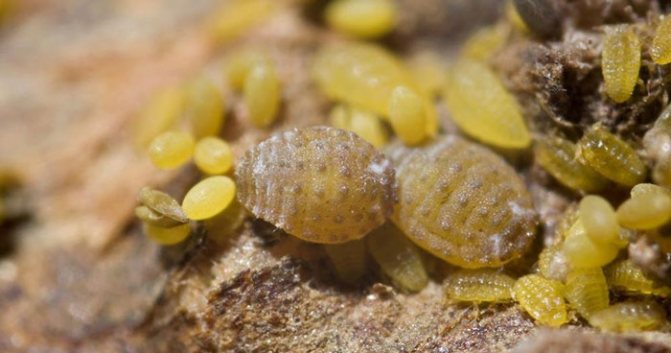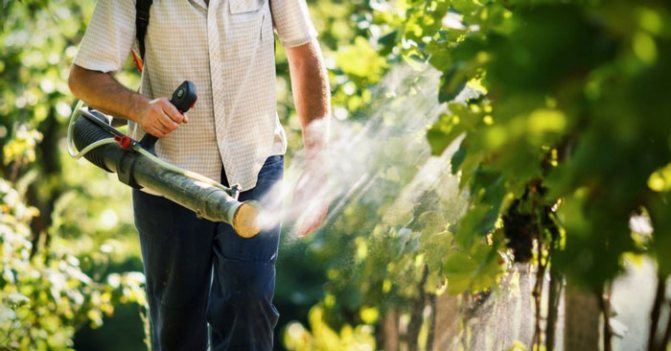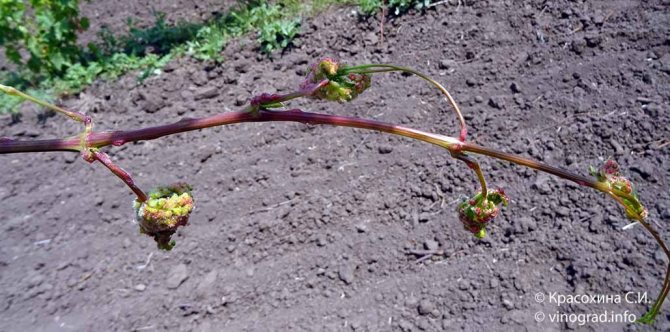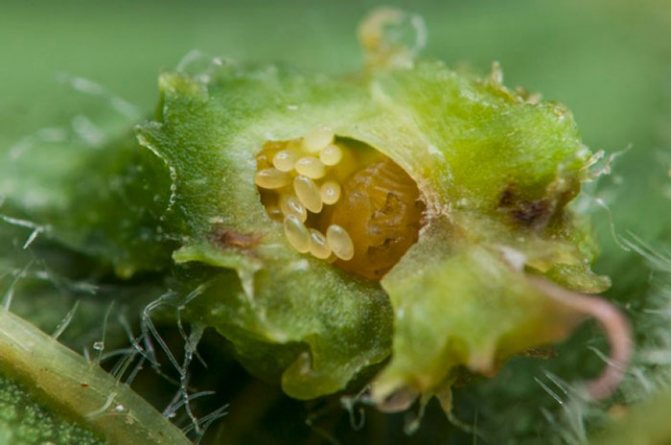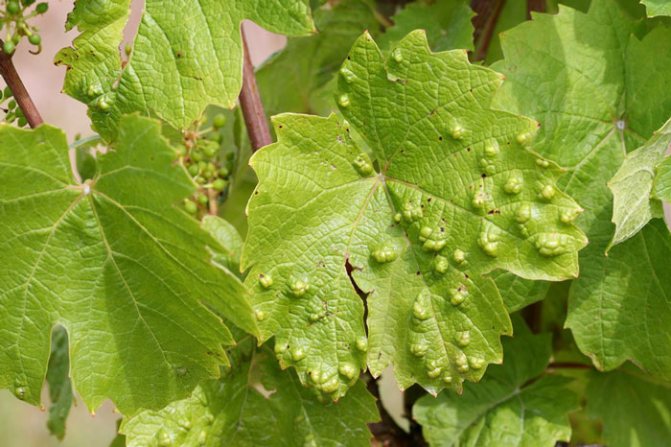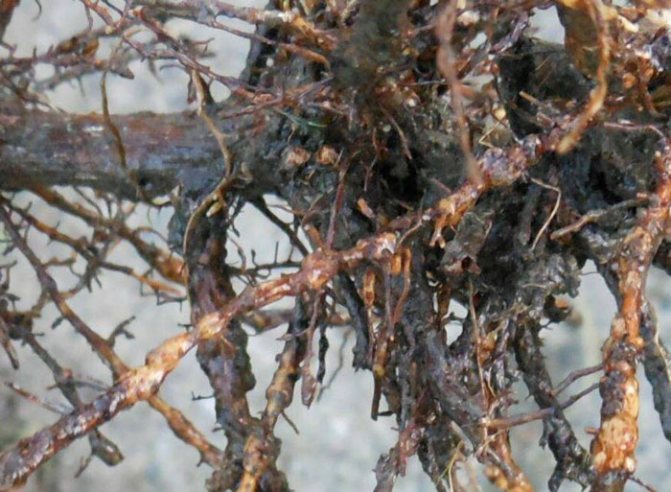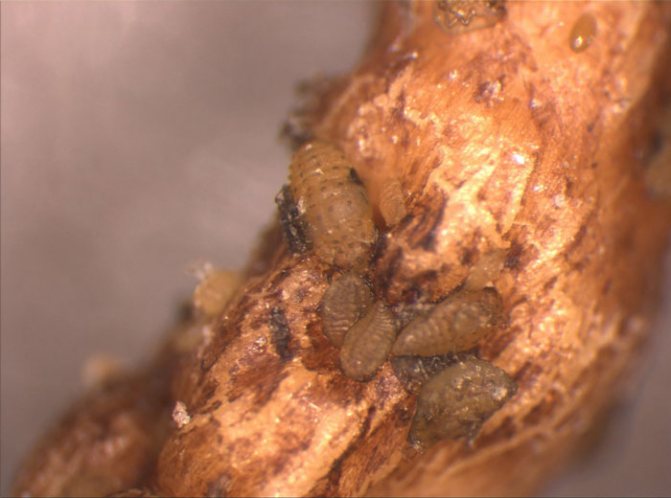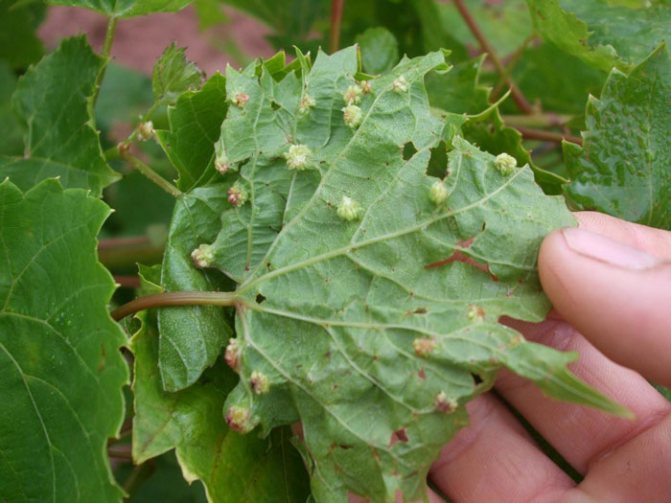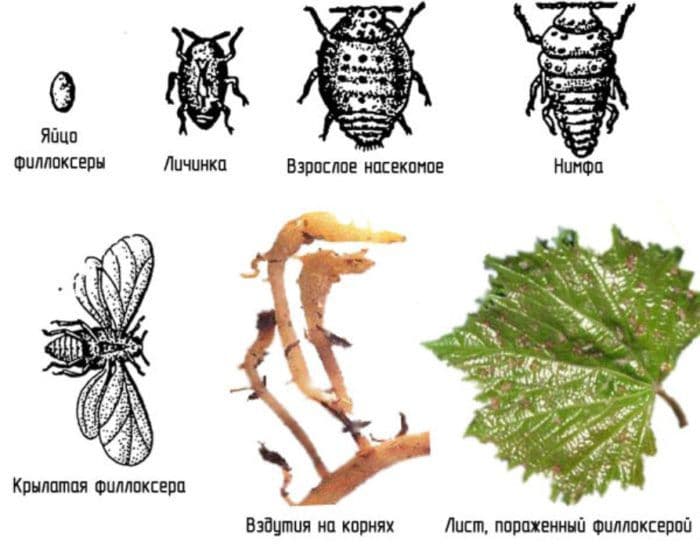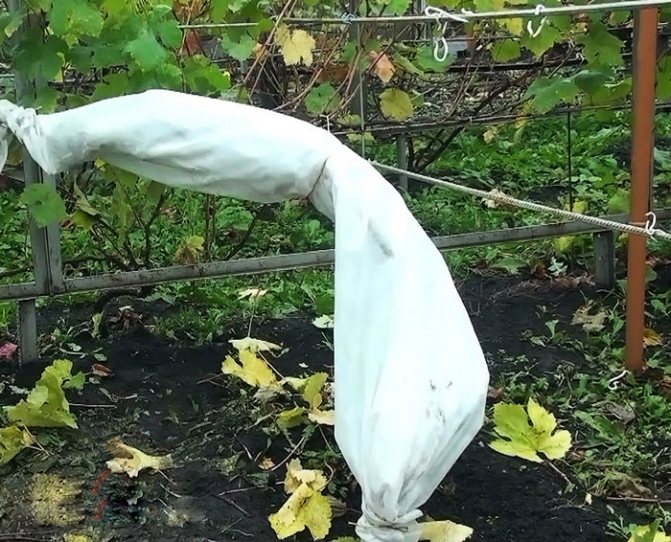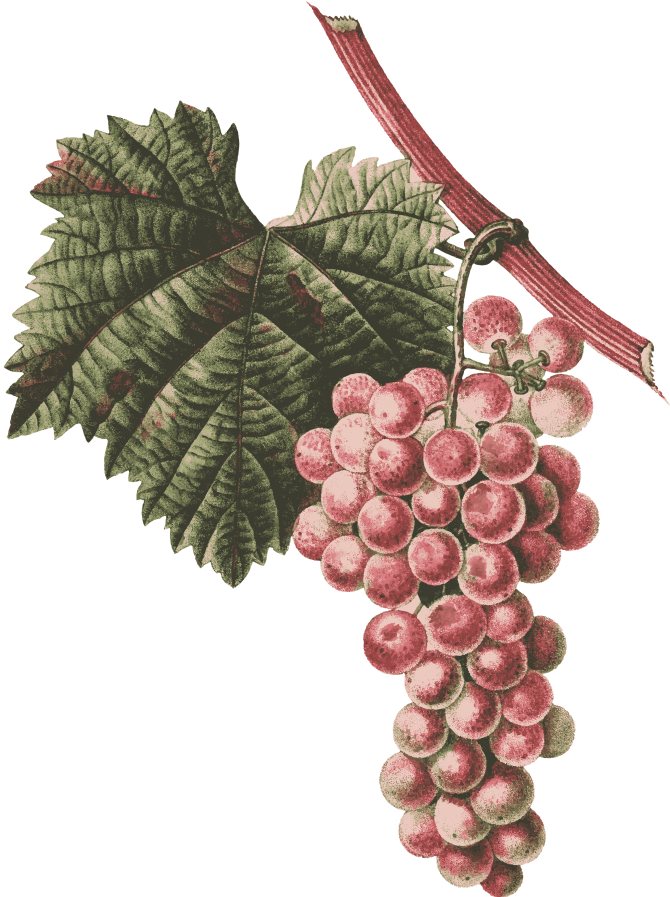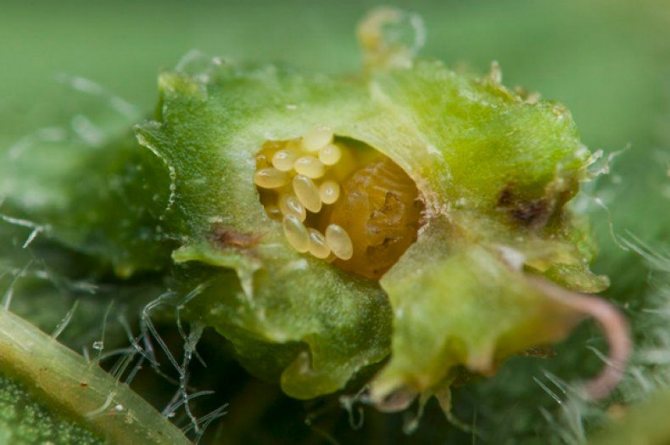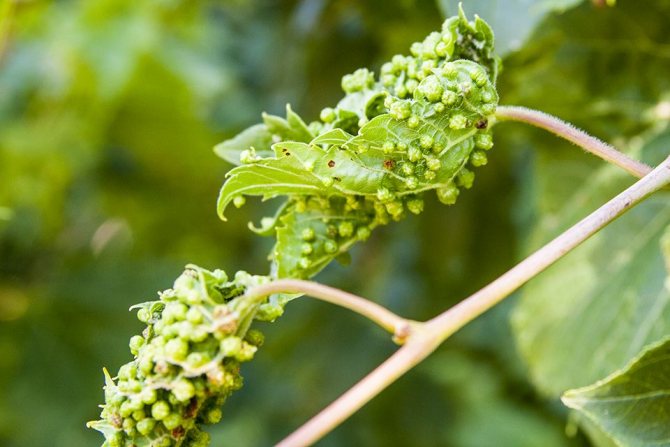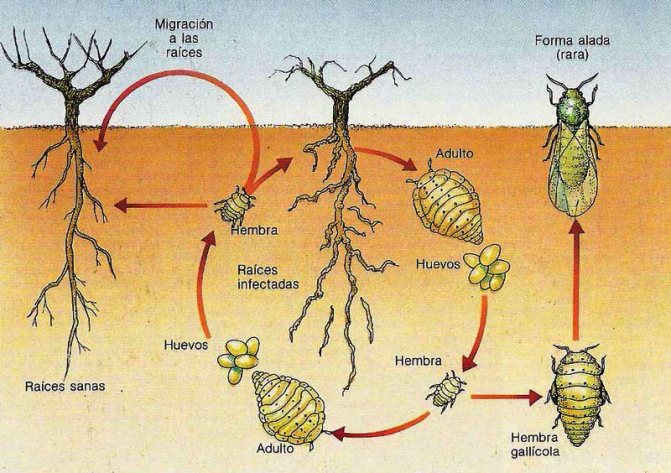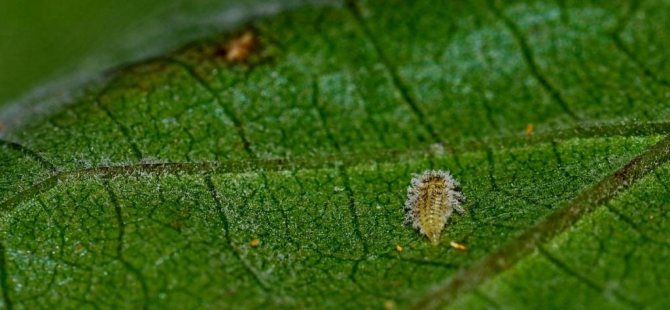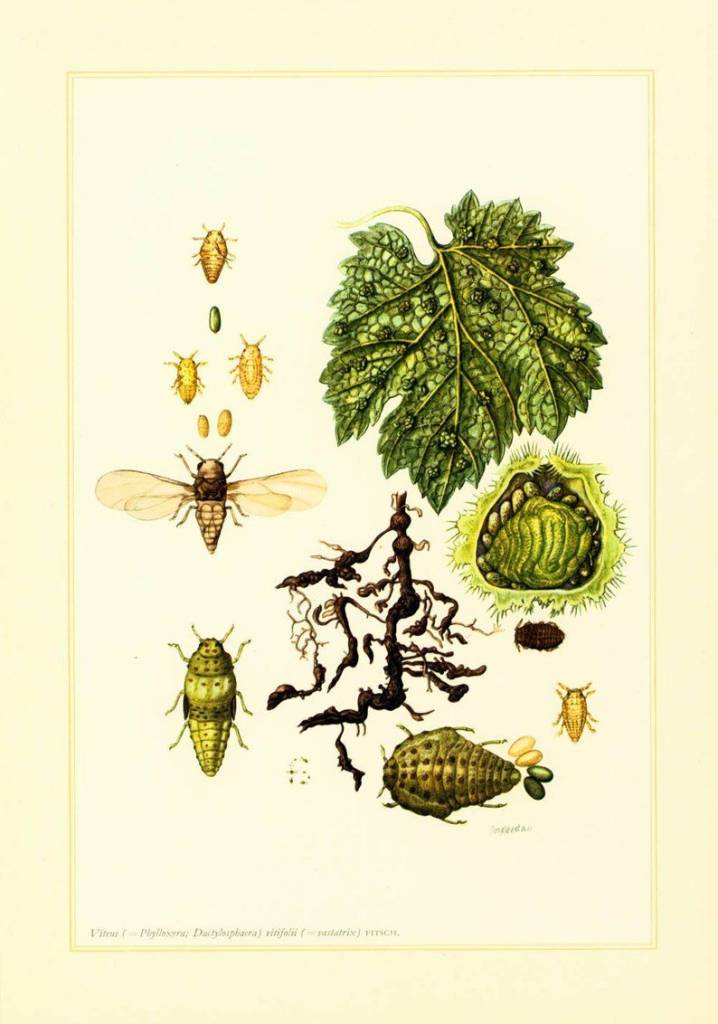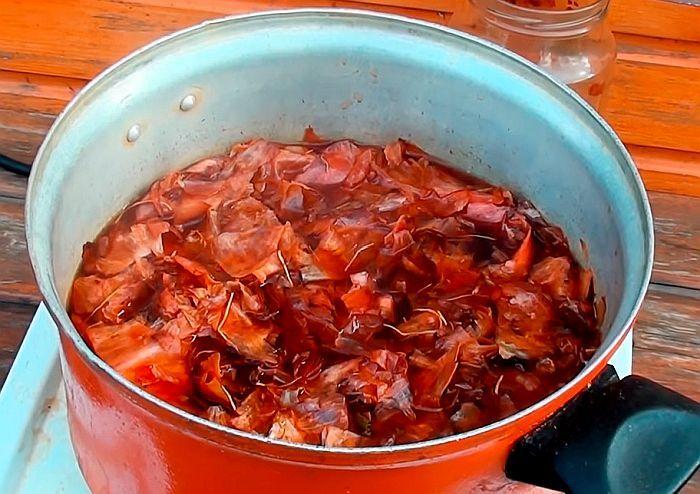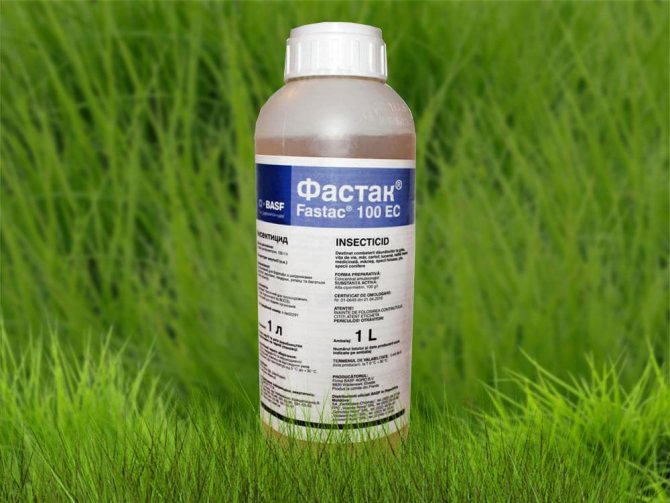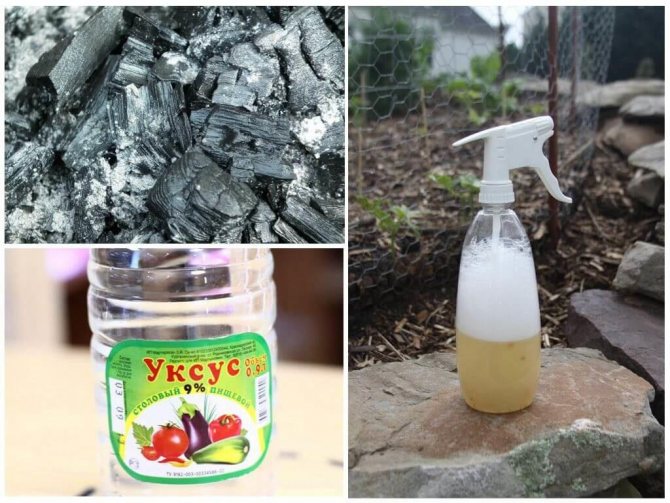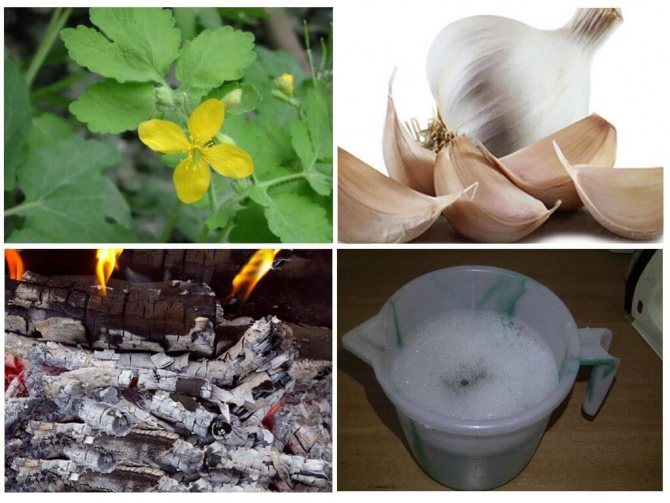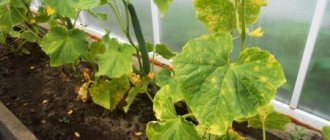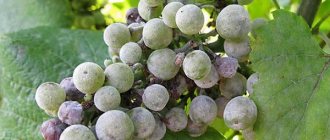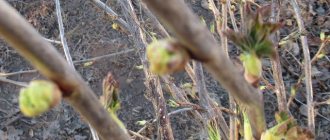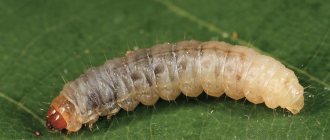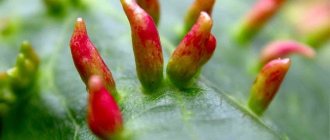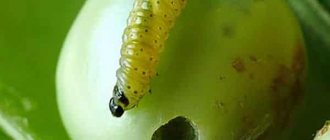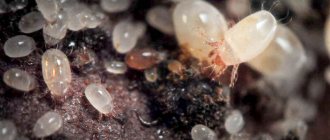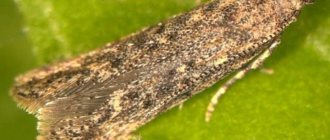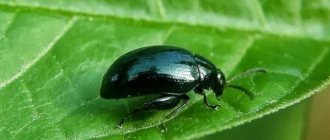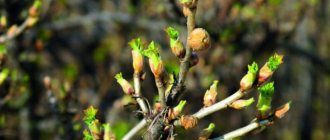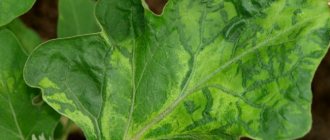Phyloxera is a grape pest that infects the leaves, roots, and cuttings of the plant. It feeds on various grape varieties, American varieties are more resistant to the root form of the pest, and European varieties to leafy ones. In a short time, it can lead to the death of the entire vineyard. In this material, we will analyze what grape aphids are, what varieties of this pest exist, how to determine the presence of insects on grapes, what measures need to be taken in order to quickly and effectively destroy insect colonies on grapes, as well as prevent their appearance on your site.
What does the leaf form of the disease look like?
Finding aphids is easy enough if you pay attention and take a closer look at the plants. Specific galls on the leaves, resembling warty spherical formations, indicate that the grapes have leafy phylloxera. If the swellings are noticeable only on the underside of the green mass, then this is the primary infection of the bush, and if on the upper side, then the larvae have already colonized again.
It should be noted that the intensity of phylloxera development on plants can be different and directly depends on the immunity of the bushes and their age.
So, if phylloxera (growths on the leaves of grapes) is clearly visible with the naked eye, the fight against it should begin immediately. However, experts also distinguish between the root form of the disease, due to which the bushes slow down their growth, the leaf becomes small, and fruiting is poor. Visually, the plant is simply depressed, and in order to establish the exact cause of its disease, it will be necessary to take samples for detailed study more than once.
Tips and tricks from experienced gardeners
When fighting a pest on grapes, the following types of advice must be followed:
- processing with special chemicals must be carried out with an interval of at least 10 days;
- in the spring, before the spraying procedure, it is necessary to tie up the branches;
- to carry out processing with copper sulfate in the spring;
- mulch the soil using sawdust or pine needles, this mulch repels insects;
- use resistant varieties that are not attacked by aphids;
- the affected areas must be removed and burned;
- for prevention, it is necessary to spray in the spring.
Compliance with the tips will reduce the infection, increase the yield of the crop.
How to recognize the root form of the disease
In order to identify the presence of aphids or traces of its presence on the root system, you need to dig up a few suspicious vines or superficial roots. Experts recommend doing the procedure in the second half of summer, since it is during this period that the pest actively multiplies and it is easier to detect it. The sample should also contain soil. Using a sharp, thin knife or scalpel, carefully separate the lumps of earth and examine the contents of the cracks in the bark. If phylloxera of grapes is present on them, then the grower will notice small swellings on small roots, and on thick ones - clusters of aphids, resembling yellow spots. They will be roundish, no more than 1 centimeter in diameter.It is noteworthy that the affected root tips take on a hooked or clavate shape with yellowish-white nodules that darken over time, disintegrate, and then completely become almost indistinguishable. The bark resembles a sponge, crumbles, and the root itself looks dry.
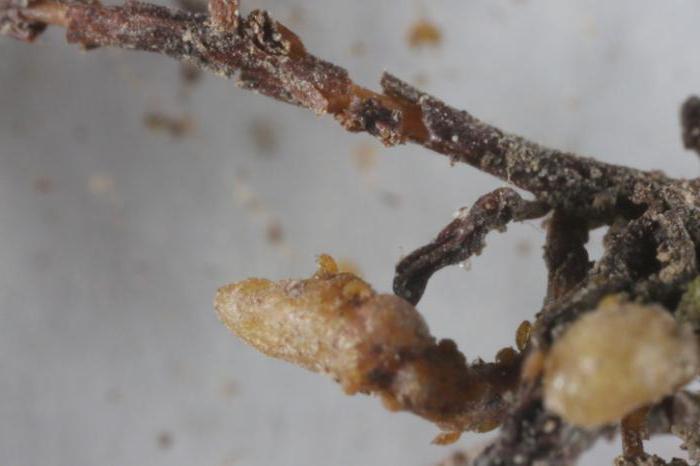
At the very beginning of phylloxera disease on grapes, it is almost invisible and it is possible to detect it only in the fifth year, therefore, the control digging procedure will have to be done annually. It is important to remember that insects most often live in areas bordering the focus of infection, since they always leave completely diseased plants and reproduce on healthy ones. The pest is capable of settling both on the surface of the root and on the part located at a depth of just over a meter. For inspection, you need to choose samples taken from live bushes.
Homeland of phylloxera, when and where it was revealed
The homeland of the most dangerous quarantine pest is the southeastern part of the United States. Most often, it was found on wild shrubs growing in the Mississippi River basin. The first defeat of vineyards was recorded in 1868 in Europe. It is known from history that in the 19th century, phylloxera of grapes destroyed more than 6 hectares of plantations, and appeared in Russia in 1880. The great winegrower V.E. Tairov noted that aphids are the most terrible and stubborn pest, since they live on roots and foliage, destroys bush after bush and brings only devastation and disaster everywhere. In the second half of the century, the pest appeared in the south of France and spread with an extraordinary speed in almost all European regions.
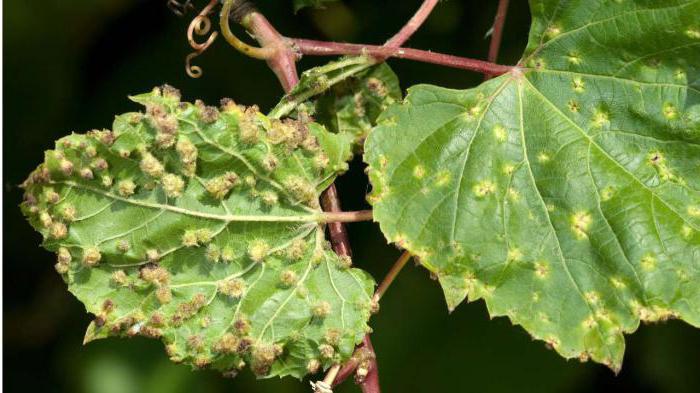

It is worth noting that in a short period of time, phylloxera destroyed over 70% of vineyards around the globe.
Implications for the harvest
The defeat of the vineyard by the pest leads to the gradual death of the shoots, which halves the yield in the first years. In the future, the yield of the affected bush will drop in proportion to the degree of damage to the plant. If the bushes are affected by the gall form of the parasite, the forming clusters can be destroyed, as a result of which the gardener will not receive the crop of the specified culture at all. Tempranillo is the most susceptible to phylloxera.
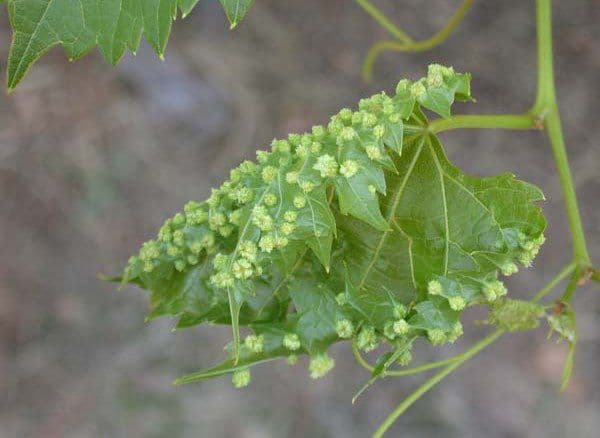

The only way to save it is to treat the culture with fungicides.
When the roots of the plant are damaged in the third year, the grape bush dries up and completely dies off. In this case, there can be no question of any harvest.
Root Pest Lifestyle
The grape aphid has an extremely complex life cycle and is divided into the following forms:
- underground;
- ground;
- providing communication (winged).
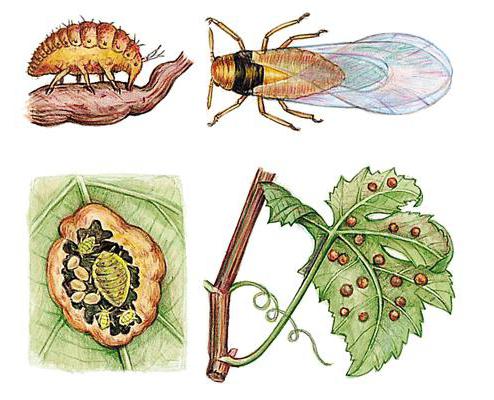

So, absolutely all individuals of aphids that infect the root system are exclusively female. Insects are distinguished by the absence of wings, yellow-green coloration with small dark dots on the back. Their sucking proboscis extends from the head to the abdominal part of the body and is able to pierce the roots of the bush to suck food out. Within 4 - 6 weeks, females lay hundreds of yellowish eggs, of which, after 8-10 days, larvae with an especially long proboscis are born. The pest of this form prefers to settle on old plants and hibernate on them.
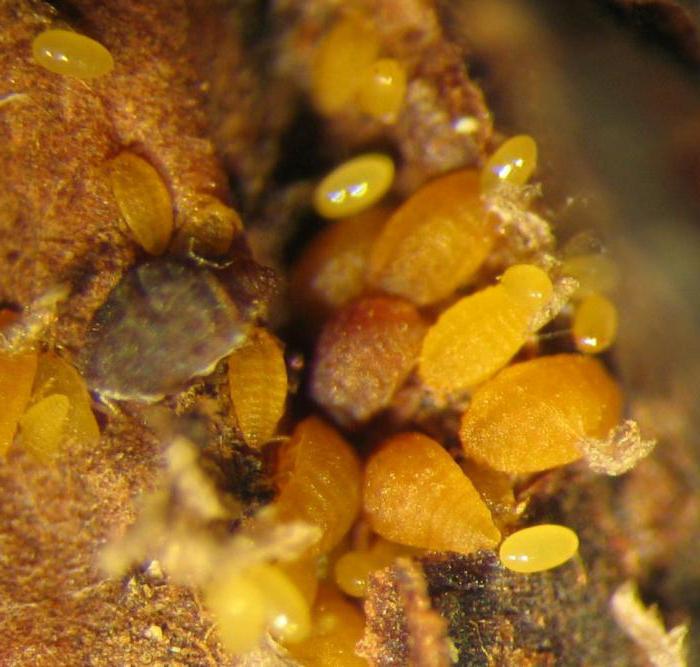

It is noteworthy that the larvae that survived until spring are very resistant to cold, and the fight against them will not be easy.
Reasons for the appearance
Various factors can provoke the formation of a pest.
Climate
A pest can form in dry weather. The insect can also enter the garden area with the wind.
Violation of cultivation techniques
Before planting grapes, it is necessary to neutralize the planting site, this will reduce the risk of infection with grape aphids. Also, infection can occur as a result of a lack of the required amount of nutrients.Infected crops do not have immunity to fight the pest and die.
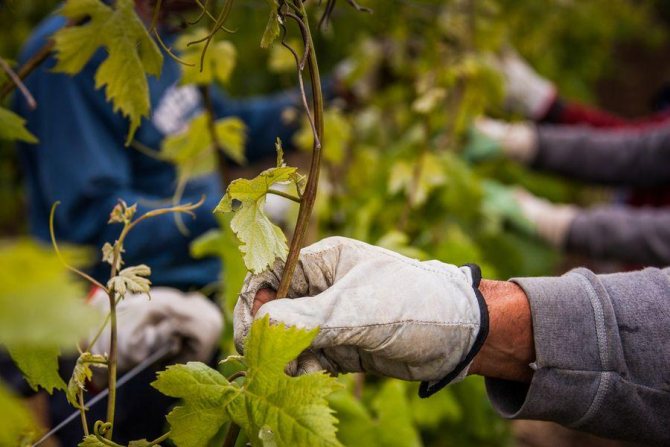

Wrong choice of planting material
The reason that provokes infection of the culture is the incorrectly selected planting material. Pest eggs can be dormant for several years and hide on seedlings.
It is necessary to carefully examine the root and stalk. There should be no seals and growths on it, in which the larvae can hide.
Also, the insect causes the process of decay, which leads to the complete death of the roots.
See also
Ways to properly tie up grapes and the choice of material for beginners
To read
Important. Infected grapes should not be used as a mother shrub. The larvae can move with the cuttings and attack the seedling.
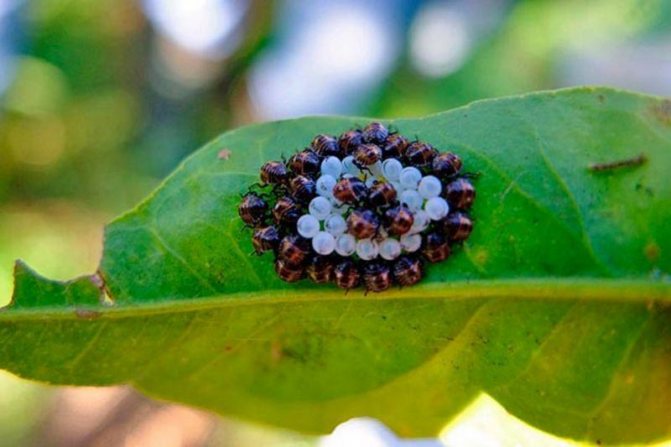

Infected inventory
Before each processing of the crop, it is necessary to process the inventory that is in use. Very often, the eggs of the pest hide in the ground and can settle on a shovel.
Winged form lifestyle
In late summer - early autumn, among the root aphids, you can see nymphs - thinner orange individuals with wing buds. They develop more actively in conditions of high humidity and certain weather conditions. Insects crawl to the surface and after the 4th molt finally turn into a winged form with long tentacles and well-developed eyes. Such a pest is already capable of flying over short distances, laying unfertilized eggs on the buds of grapes, the underside of the leaf and loose bark. From smaller larvae, males grow, which live only up to 10 days, since they cannot feed due to the lack of proboscis. However, after a single sexual intercourse, the female lays one fertilized egg, which will hibernate in the cracks and crevices of old wood.
Leafy lifestyle
With the onset of spring, female wingless aphids hatch from a winter egg, initially settling on 1-6 leaves. Gradually, it climbs higher and higher, sucking out all the juices from the top of the green mass. In places of punctures, a green gall with a concave shape is formed, sometimes with reddish spots. In just a few weeks, the phylloxera of grapes lays more than 1000 eggs, of which, after 8 days, young individuals appear, settling on immature shoots. The pest will rapidly crawl upward, and when the plant is already completely infected, it moves to other bushes. It is noteworthy that under favorable conditions, up to 5 generations of aphids can develop in one season. By autumn, the pest becomes even larger, its body is much stronger, and the proboscis is longer. Despite the fact that the leaf form dies along with the fallen leaves, such phylloxera on grapes tolerates control measures very steadily.
How phylloxera spreads
Root, leaf and winged grape aphids are able to move very actively along green shoots, foliage and in the soil. Sometimes underground individuals find themselves on the surface, where they move for hours without food and rest at a speed of 3 cm per minute. Winged insects travel up to 100 meters. Also, grape phylloxera passively travels long distances by wind, mud or rainwater. There are cases when the pest traveled about 30 kilometers. The spread of the disease is also facilitated by the person himself, who acquires infected grafting and planting material, treating healthy plants with dirty tools.
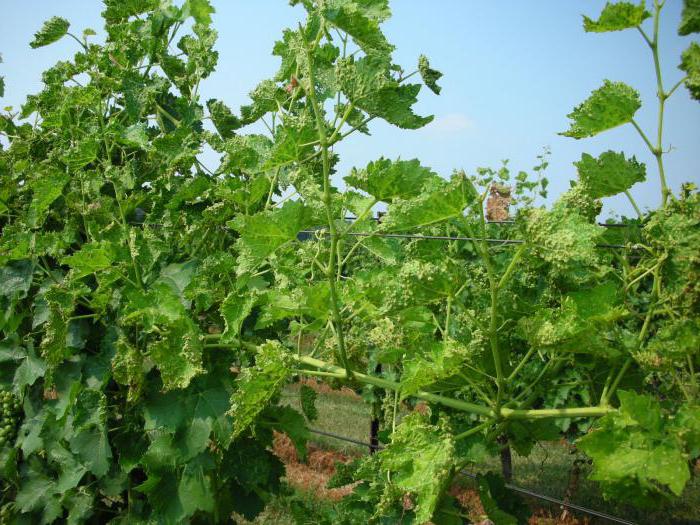

In addition, the pest is carried by wild animals and birds.
Why phylloxera is dangerous
In the course of its life, phylloxera primarily affects the root system, so the bush receives less nutrients every year or stops absorbing them altogether. The growths, nodules and nodules completely isolate the underground parts of the plant, as a result of which they die from starvation. Young bushes can begin to dry out 3-5 years after the defeat, and older ones - much later. The shoots of weakened grapes do not have time to ripen, so they often do not tolerate winter frosts.
If we consider the lesion focus, then we can see that its outlines differ in an oval shape, because the pest spreads in all directions from the object of primary infection. How to treat grape phylloxera, and a photo with a detailed description of the pest, is easy to find in many sources, but it is best to purchase disease-resistant varieties.
conclusions
- Phyloxera is a grape aphid that can feed on plant roots, tendrils, cuttings, and leaves.
- There are two main forms of the pest: deciduous and root. Also, the gall aphid, which forms special tubercles for breeding, and the sexual form that emerges from the nymphs at the end of summer are especially distinguished.
- When phylloxera is damaged, the vineyard loses its yield, in 3 years the young vine dies. An old vineyard can live 4-5 years with such a pest.
- To eliminate the phylloxera, it is necessary to remove the damaged areas of the vineyard, and the bush itself must be treated with fungicides. You need to carry out up to 3 treatments with the same drug. If its application does not give the desired result, the product must be replaced.
- Prevention of grape aphids provides for strict adherence to the rules of agricultural cultivation, including grafting of grapes and keeping young seedlings in quarantine.
What grape varieties are best planted on the site
Since the pest predominantly settles on American grape varieties, experts recommend growing European plant species by planting them in the sand. It is also rational to switch to complex-resistant new varieties or Saiv-Villar hybrids. It is also safe to use European grape varieties that are resistant to phylloxera at the time of grafting.
Recommended varieties of rootstock vines:
- Cober 5BB;
- Riparia x Rupestris 101-14;
- Riparia Gloire.
The roots of these plant species are resistant to the decay process and do not die at the time of phylloxera infection.
Prophylaxis
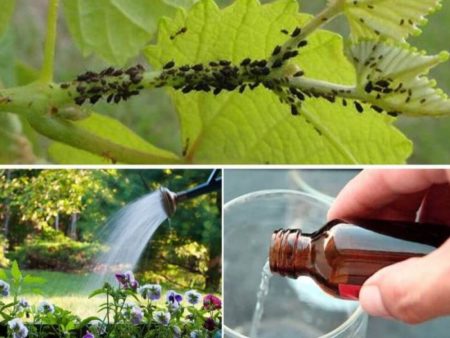

"Any disease is easier to prevent than to cure" - the statement of Hippocrates should be considered fundamental in the prevention of infection with phylloxera. For the prevention of the disease, the following actions are recommended:
- buy seedlings for planting from trusted sellers, trying to bypass the regions affected by phylloxera;
- before planting, the roots are disinfected with 24% emulsion of the gamma isomer of hexachlorocyclohexane;
- the top layer of soil is replaced with sand;
- plant varieties that are resistant to phylloxera;
- timely cut off damaged surface roots;
- plant the petioles deeply;
- in difficult soil, when planting, sprinkle the root with a layer of sand;
- uprooting old grape bushes.
Important!
For work, use equipment that has been mechanically cleaned and disinfected.
Folk methods of dealing with phylloxera
After the phylloxera of grapes has been identified, the fight against it should begin immediately. If the spread of the pest is insignificant, then you can completely do with improvised means. So, they try to wash away harmful insects with a large pressure of water, after which they become prey for birds. The procedure should be done several times.
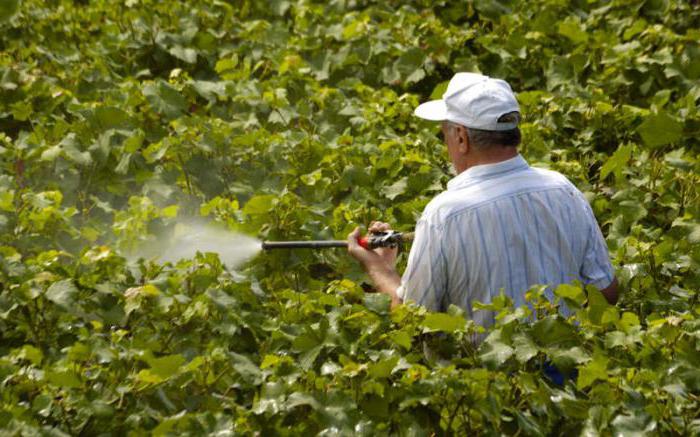

Also, many advise to prepare various types of solutions:
- Soapy (dissolve 100 g of tar soap in 10 liters of water).It is possible to mix soap with a little washing powder and detergent, but it is best to avoid products that are too fragrant as they attract insects.
- From ash (1 glass for 5 liters of water and leave for 12 hours).
- From the peel of citrus fruits (boil 0.5 liters of the crushed substance in 1 liter of water, filter and add another 10 liters of liquid).
- From the tops of nightshade plants (half fill a 3-liter bottle with finely chopped herbs and pour boiling water over the neck. Insist for a day, then add 1 tablespoon of soap shavings or powder).
- Tobacco (brew 1 glass of tobacco leaves in 5 liters of water, insist and strain).
In addition, many experienced growers advise attracting beneficial insects, birds to the plantation and planting fragrant herbs or flowers next to the bushes.
Agrotechnical measures
In order to reduce the likelihood of the appearance of a pest, it is necessary to ensure that the soil passes moisture well. For this, river sand is added. Timely watering of the crop is also of great importance.
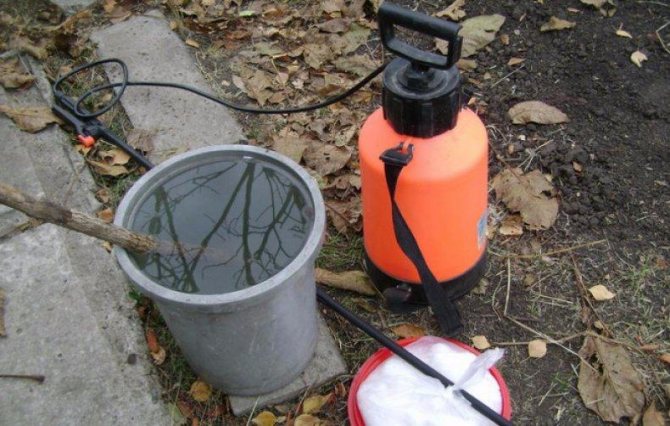

Phyloxera does not tolerate excessive moisture, therefore it is necessary to water the grapes with plenty of water. Using urea as fertilizer also eliminates the insect. You can water with a solution with urea every 10-15 days. In the evening, you can spray the bushes with water with a small addition of urea.
Chemicals to combat phylloxera
Of course, not all summer residents believe in folk methods of combating aphids, therefore they prefer to purchase ready-made products in specialized stores. It is advisable to treat grape phylloxera with insecticides, which are practically not washed off by precipitation and are absolutely safe for honey bees.
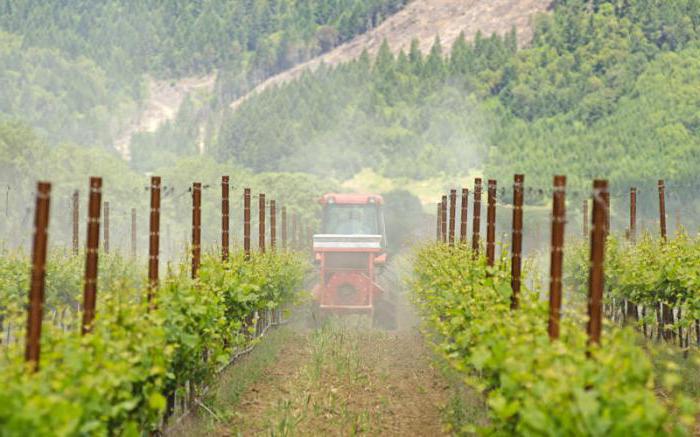

The most common aphids are:
- "Fastak" (combined with other fungicidal and insecticidal agents);
- "Fozalon" (destroys aphids and protects plants for a long period, exhibits toxic activity even at low temperatures);
- Actellik (prevents re-settlement);
- Kinmix (kills adults of phylloxera and all types of larvae);
- "Confidor" and "Bi-58" (destroy the leaf form of the pest).
It is also important to completely destroy the foci of infection by applying flammable, volatile carbon disulfide, which penetrates deeply into the soil. It is recommended to observe quarantine measures to protect other plants from the penetration of aphids.
Preventive work
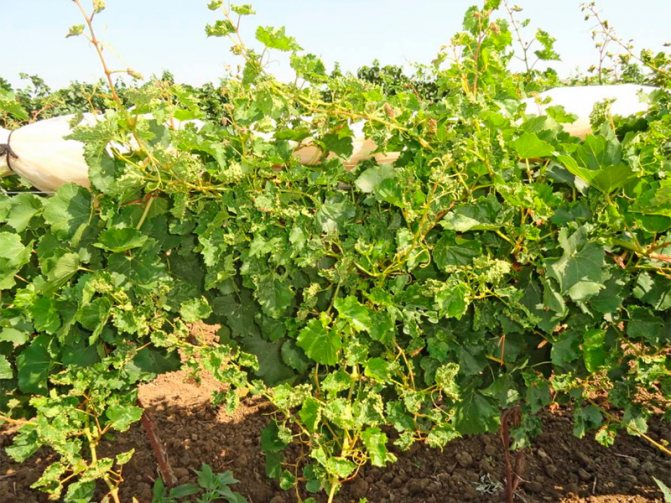

In order not to look for a way to destroy phylloxera in vineyards, it is better to attend to the methods of its prevention in time. Separate recommendations are considered workers. It is advisable to do the following:
- comply with the quarantine conditions for new plants - before planting, keep them remotely and process them;
- in the spring, carry out three-fold processing using professional insecticides or folk methods;
- choose varieties that are resistant to aphid attack;
- use a stock;
- it is enough to deepen the root system;
- choose suitable soil for planting.
Compliance with these rules does not guarantee that there will be no problem in 100% of cases, so you should regularly inspect your plants in order to detect early signs of a problem. Mineral fertilizers help to reduce the risk of infection; they must be applied according to a special schedule.

